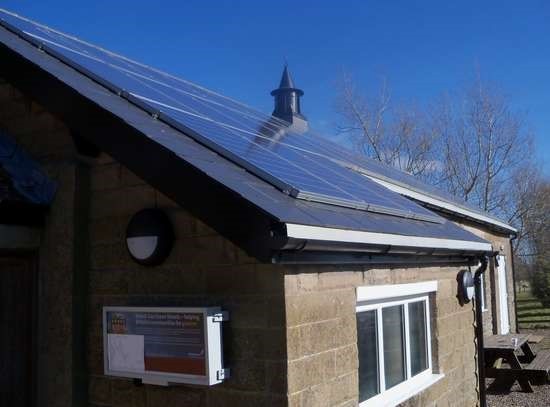Solar-powered village halls project seeks planning permission
21st Dec 2022

Our feasibility project to install solar panels and associated battery storage into a range of community buildings in Northumberland is moving to the next stage. Planning and other relevant applications for all 19 of the first wave of buildings was submitted this week (9th December 2022).
The feasibility work on this project, funded by the Rural Community Energy Fund (RCEF), covers the following areas:
- Detailed system design for the initial 19 buildings. This work is complete, and we’ll be starting to look at feasibility on another 20 community buildings spread around the county in the new year.
- Completion and submission of planning applications for all of the buildings, where required (and Diocesan approval for the church buildings involved). These applications are now ready for submission.
- Set up of a community energy co-operative to raise capital funds and manage the installations. Detailed work on this innovative new co-operative is underway, including financial modelling, with a planned launch date during Village Halls Week in January.
- Development of an energy management system to maximise the potential from the generated power. Funded by the National Lottery Community Fund, this work is also underway to support the partners in determining the optimal approach to energy management.
Once all permissions are in place, initial capital funds have been secured through the National Lottery Community Fund to install the required solar panels and batteries at three of the smaller community buildings included in phase 1 of the work. This work will take place during 2023/24 and we are actively pursuing additional funds to enable more of the installations to progress as swiftly as possible.
Andy Dean, CAN’s chief executive, said:
“This project is designed to help Northumberland’s village halls, churches and other community buildings to reduce their carbon emissions, save money on energy bills and support those buildings that operate as Emergency Rest Centres to do so even when mains power is cut off. The feasibility has been more complex and taken longer than we anticipated but it is fantastic to see the project progressing to the critical permissions stage. We have developed the project in strong partnership with the Rural Design Centre, the National Innovation Centre for Rural Enterprise and, of course, with the willing support of all the buildings involved and their committees. What a team effort!”